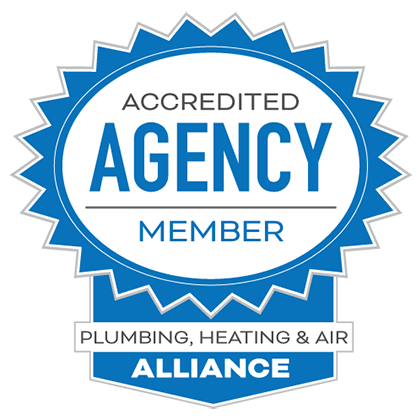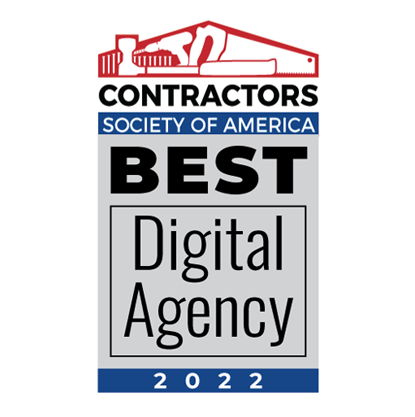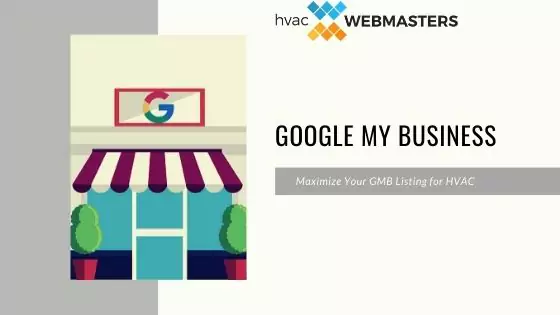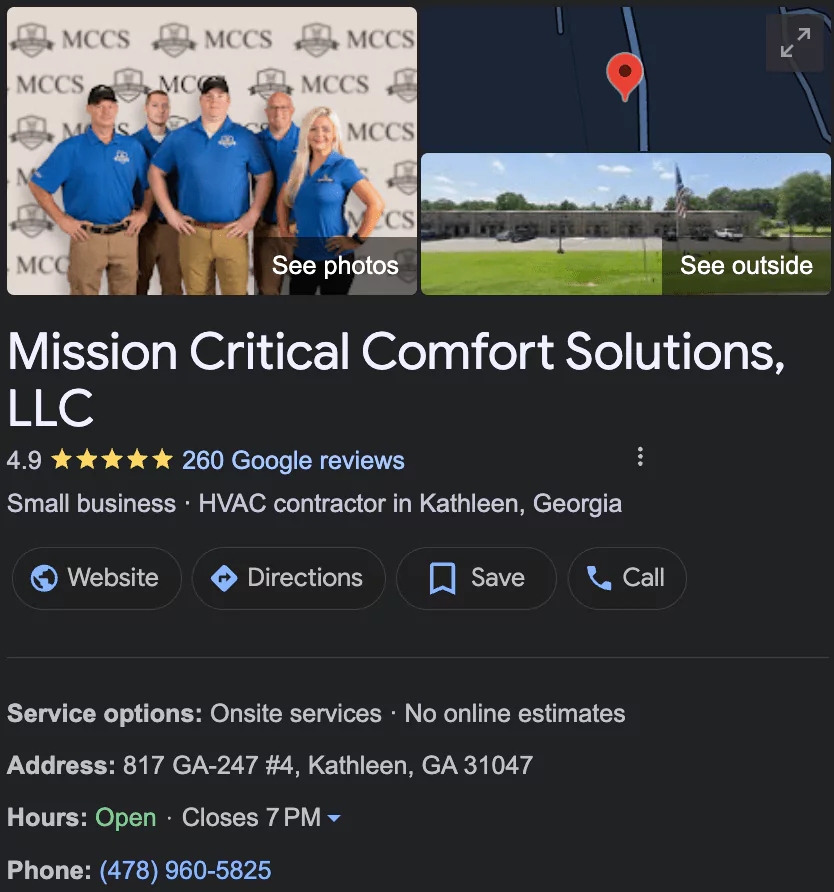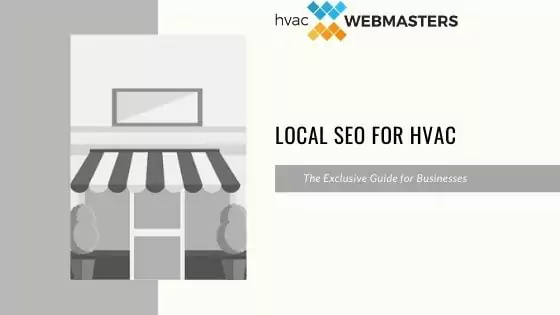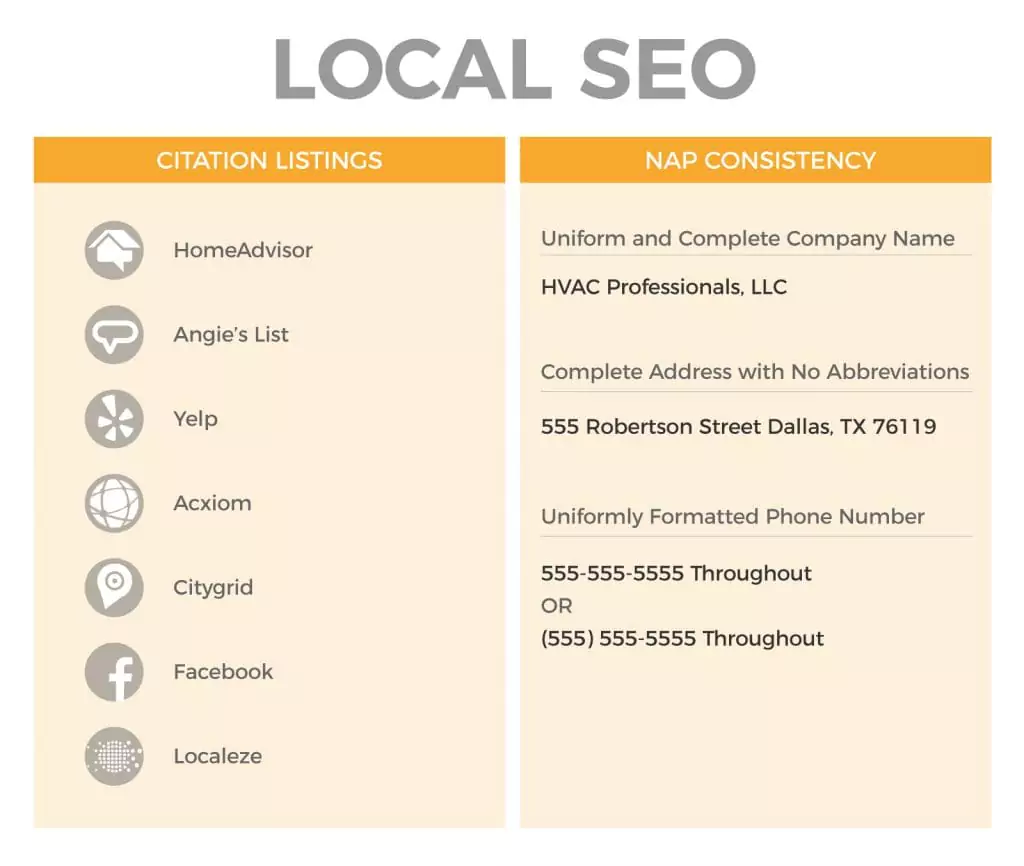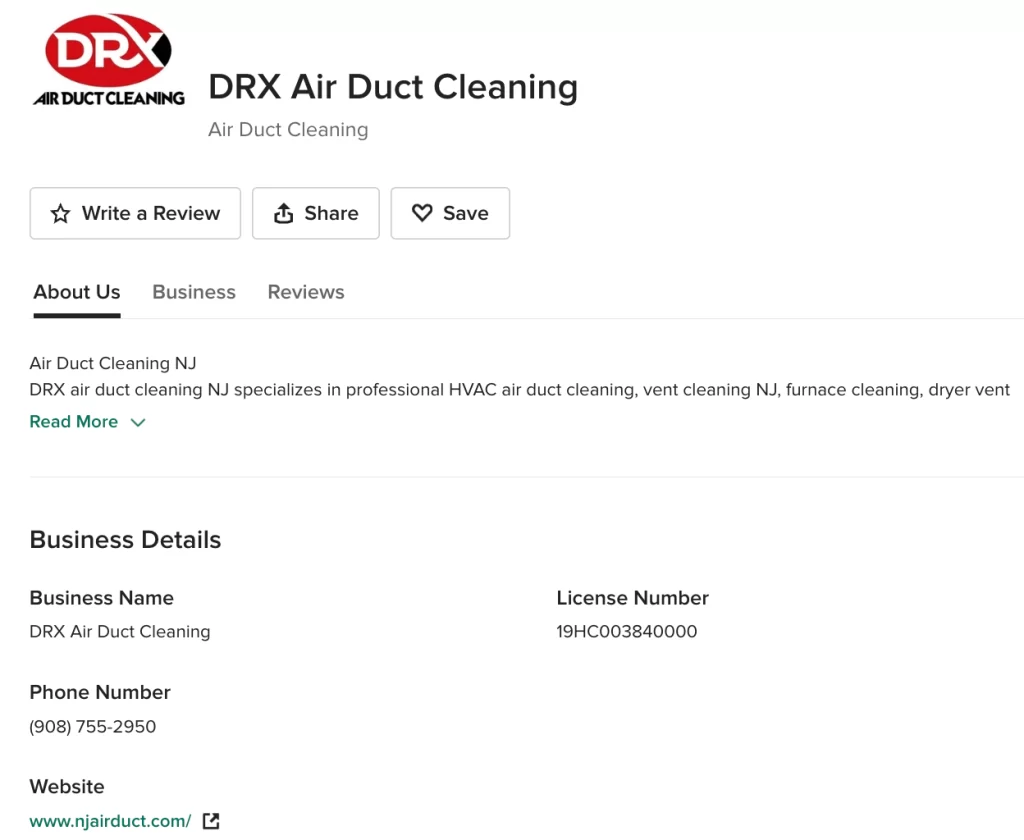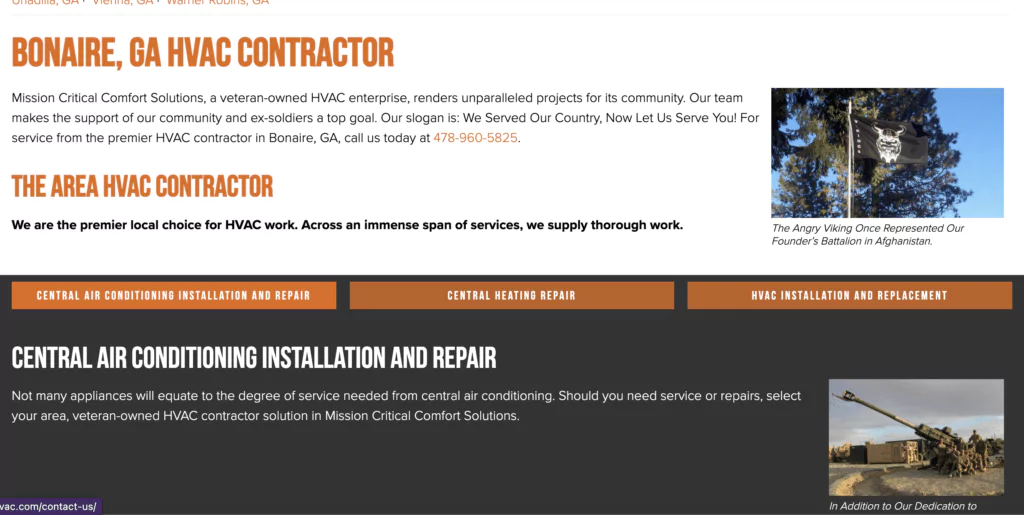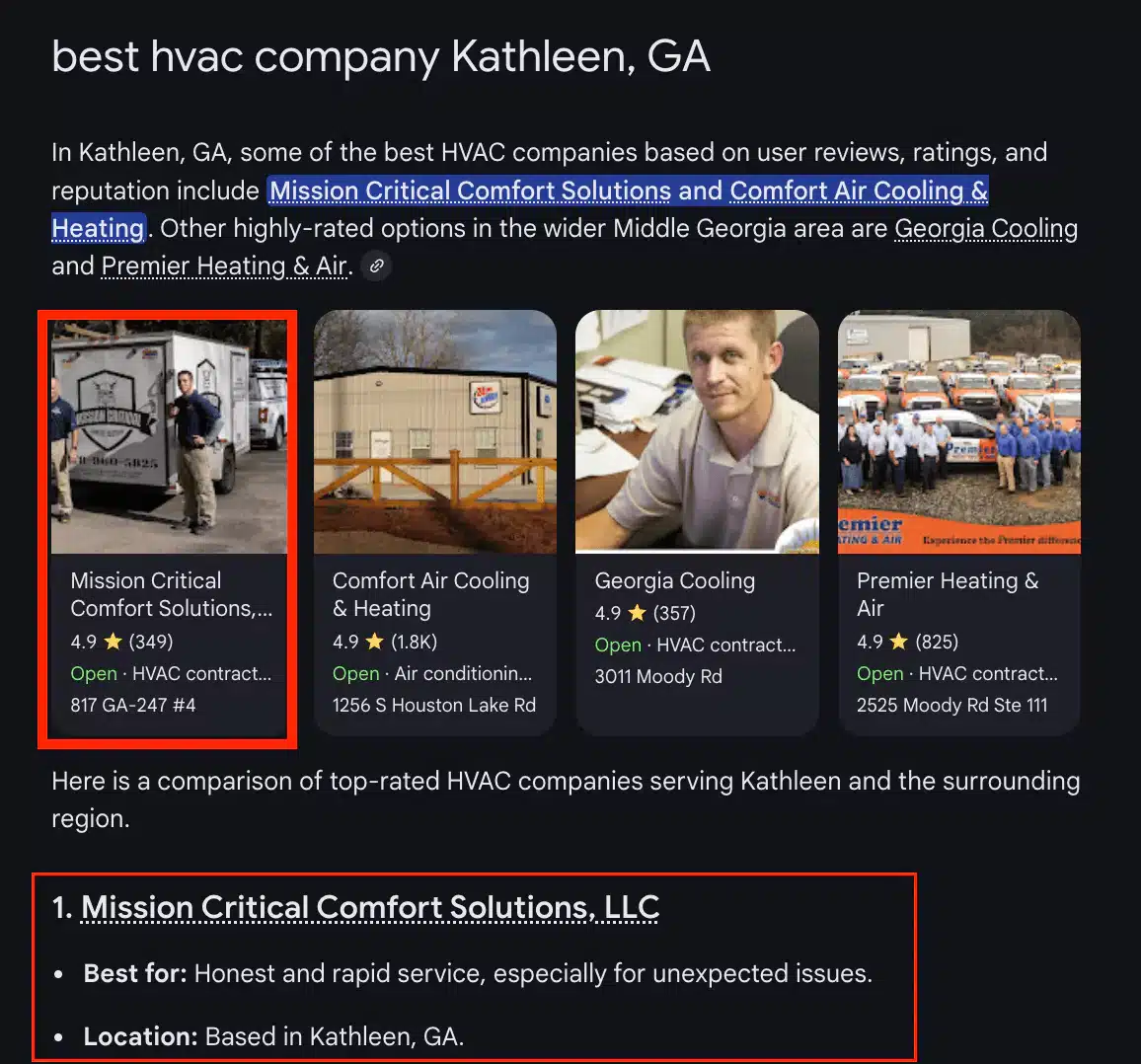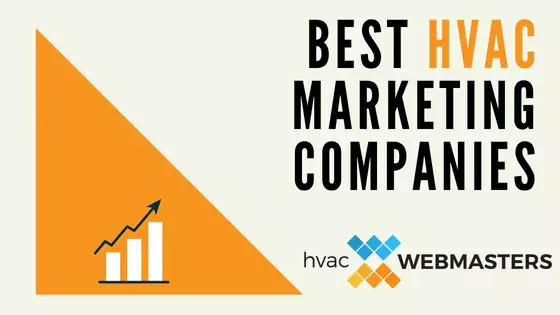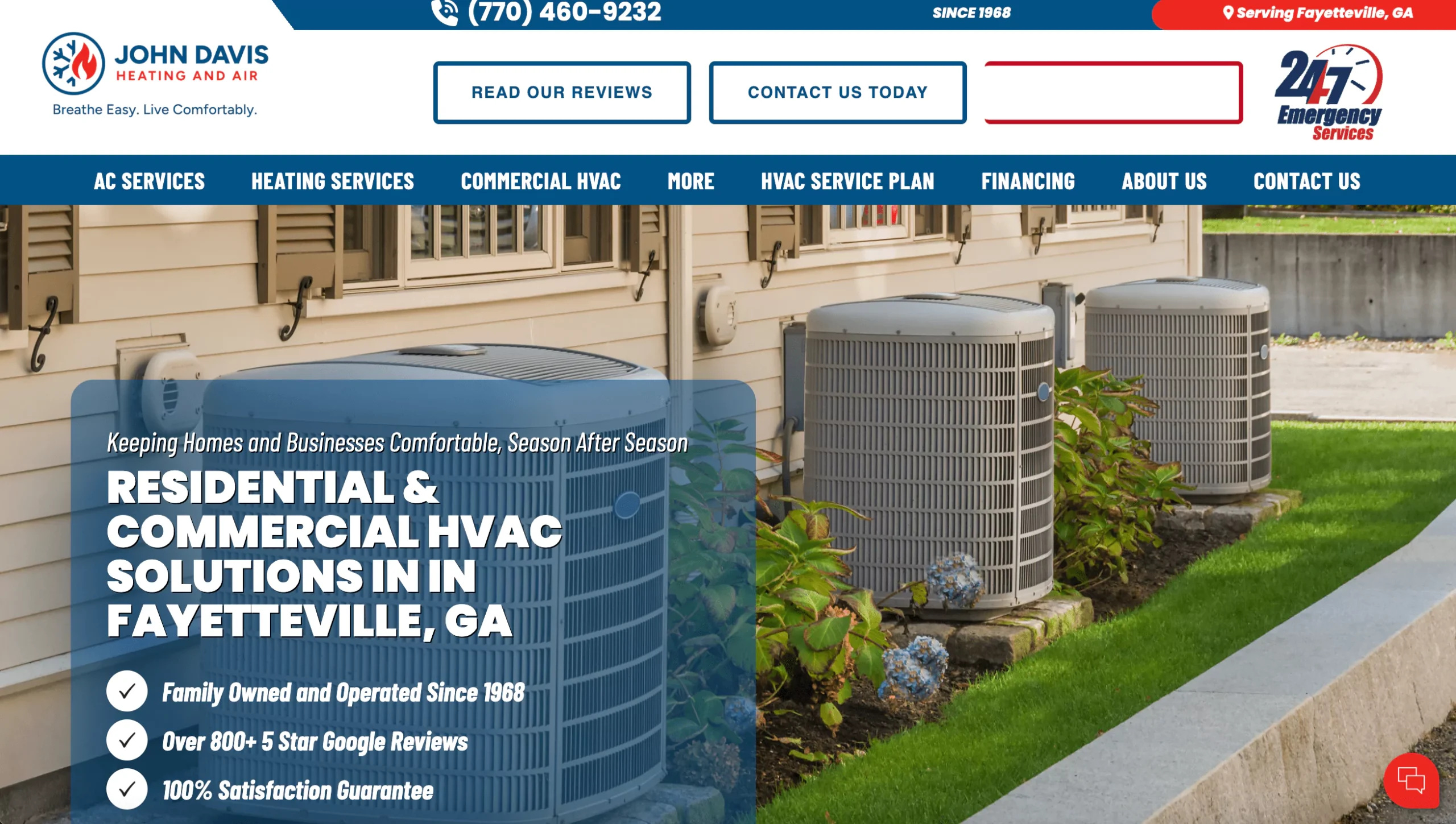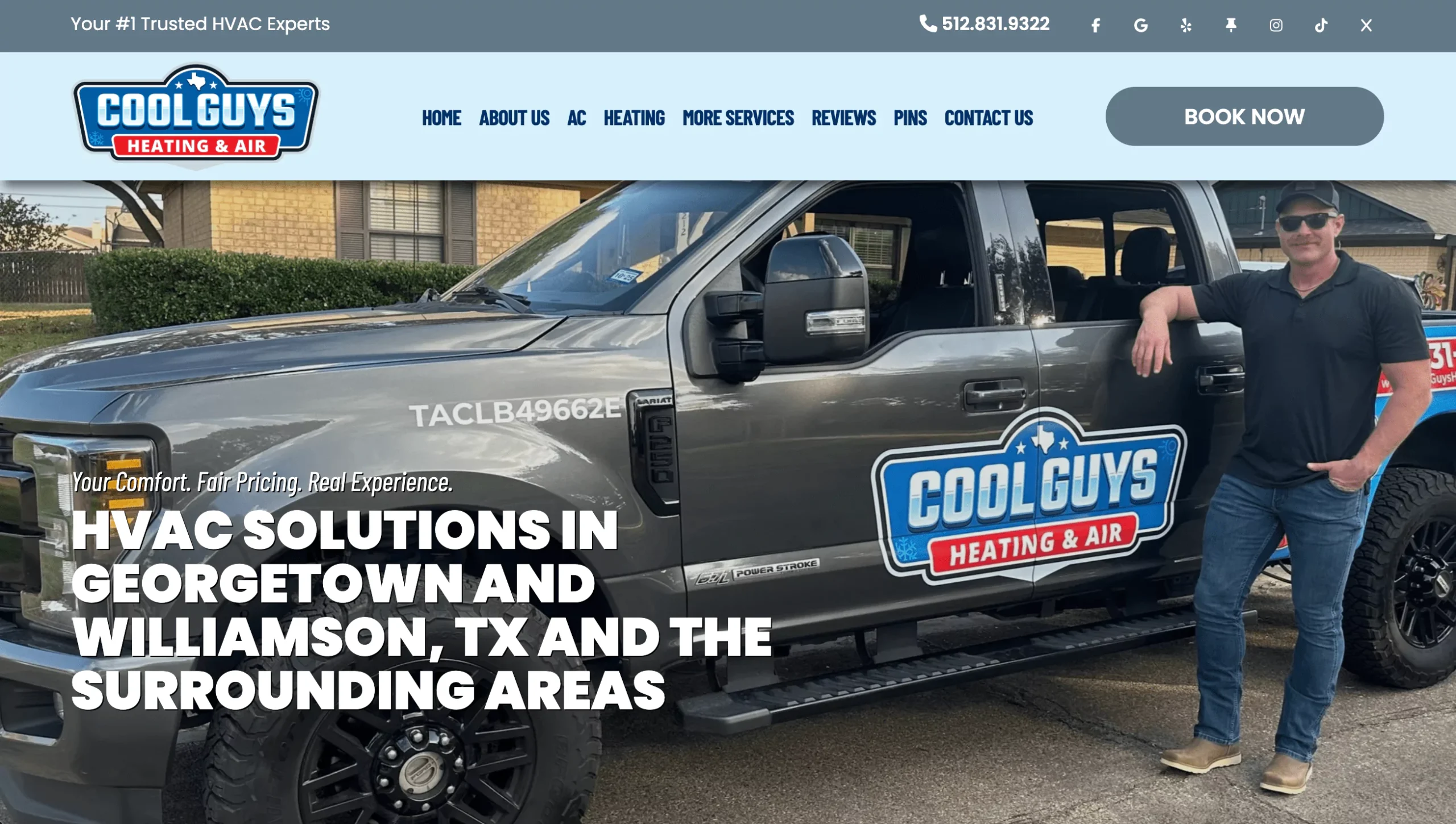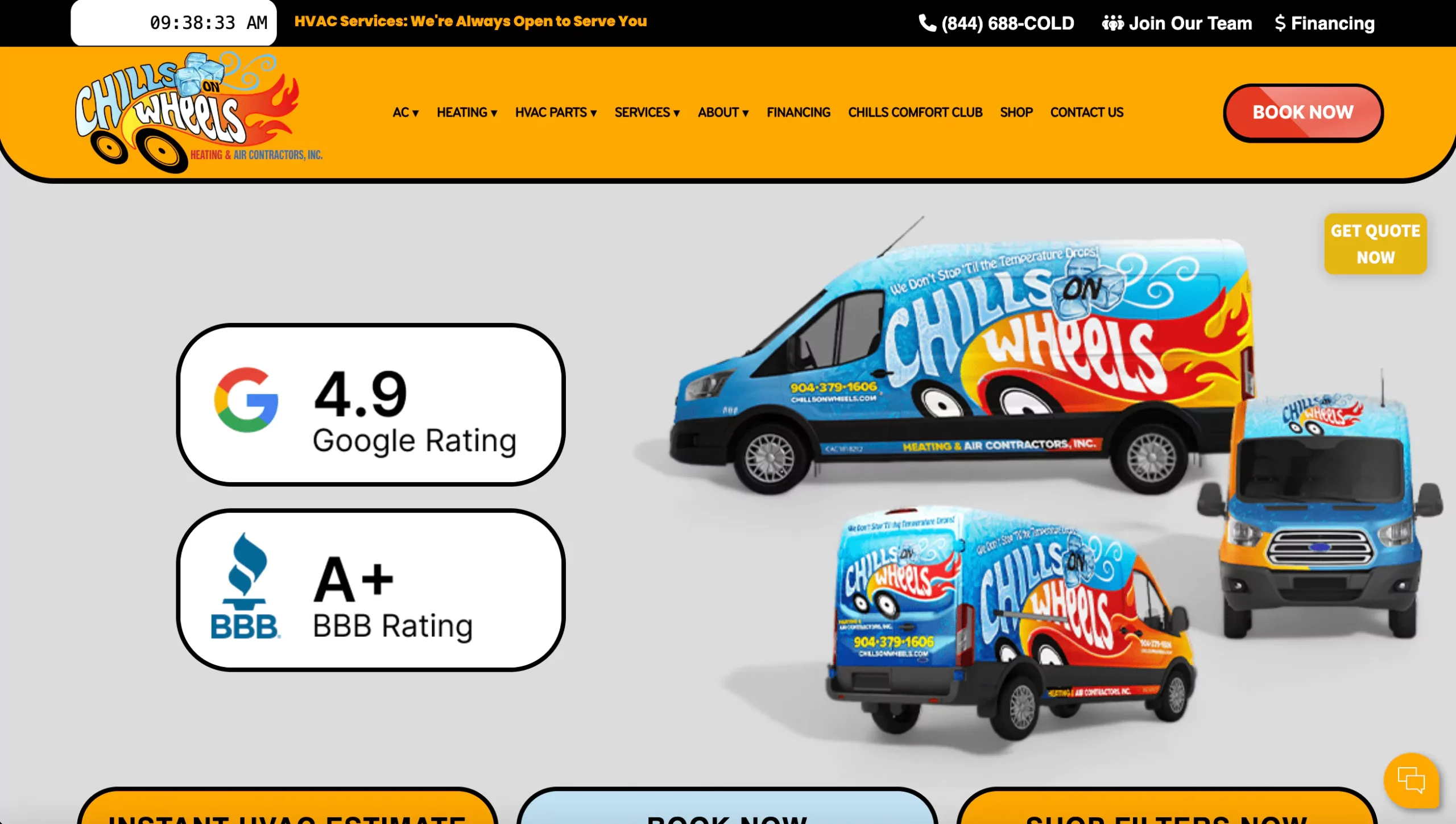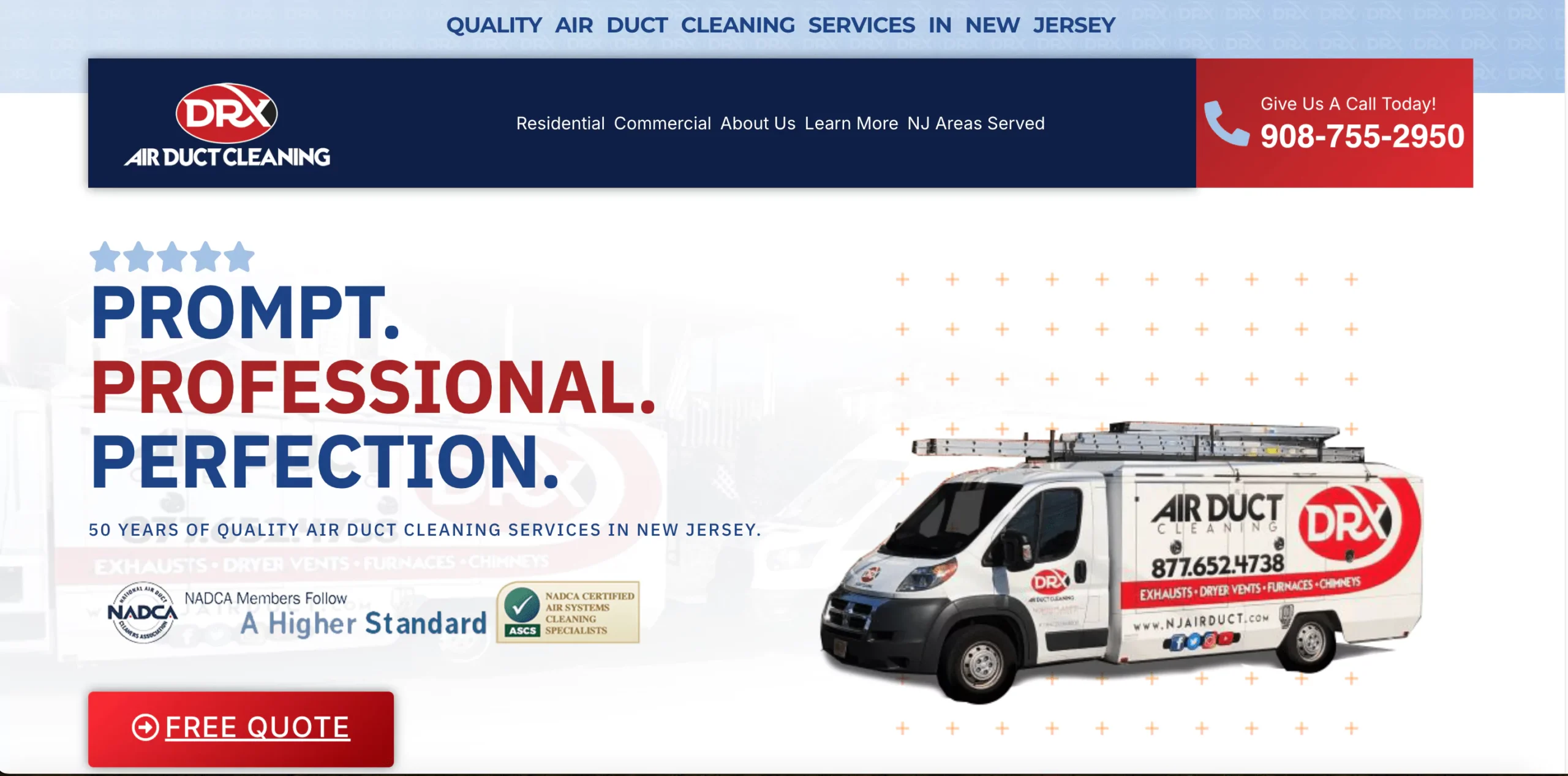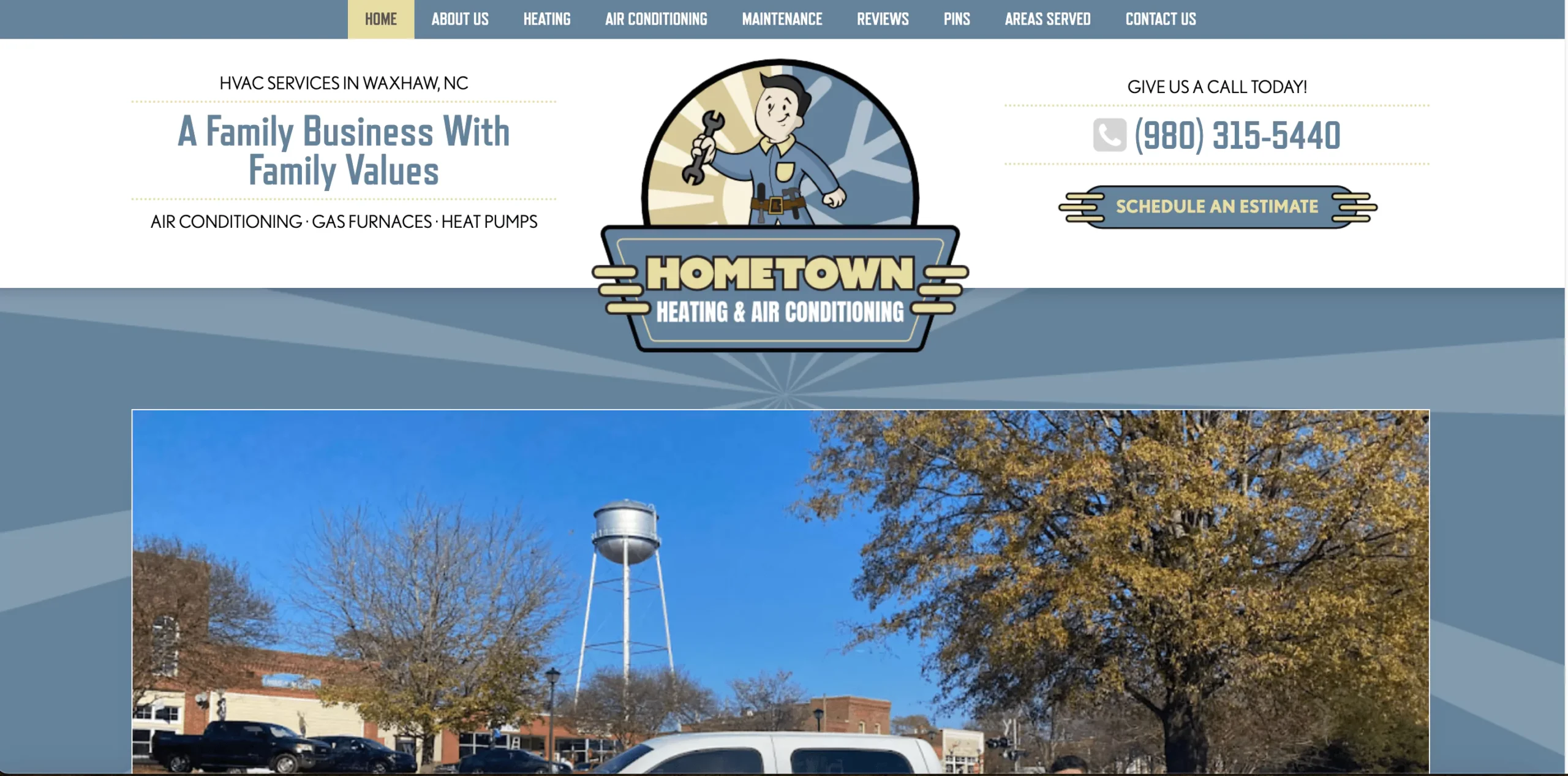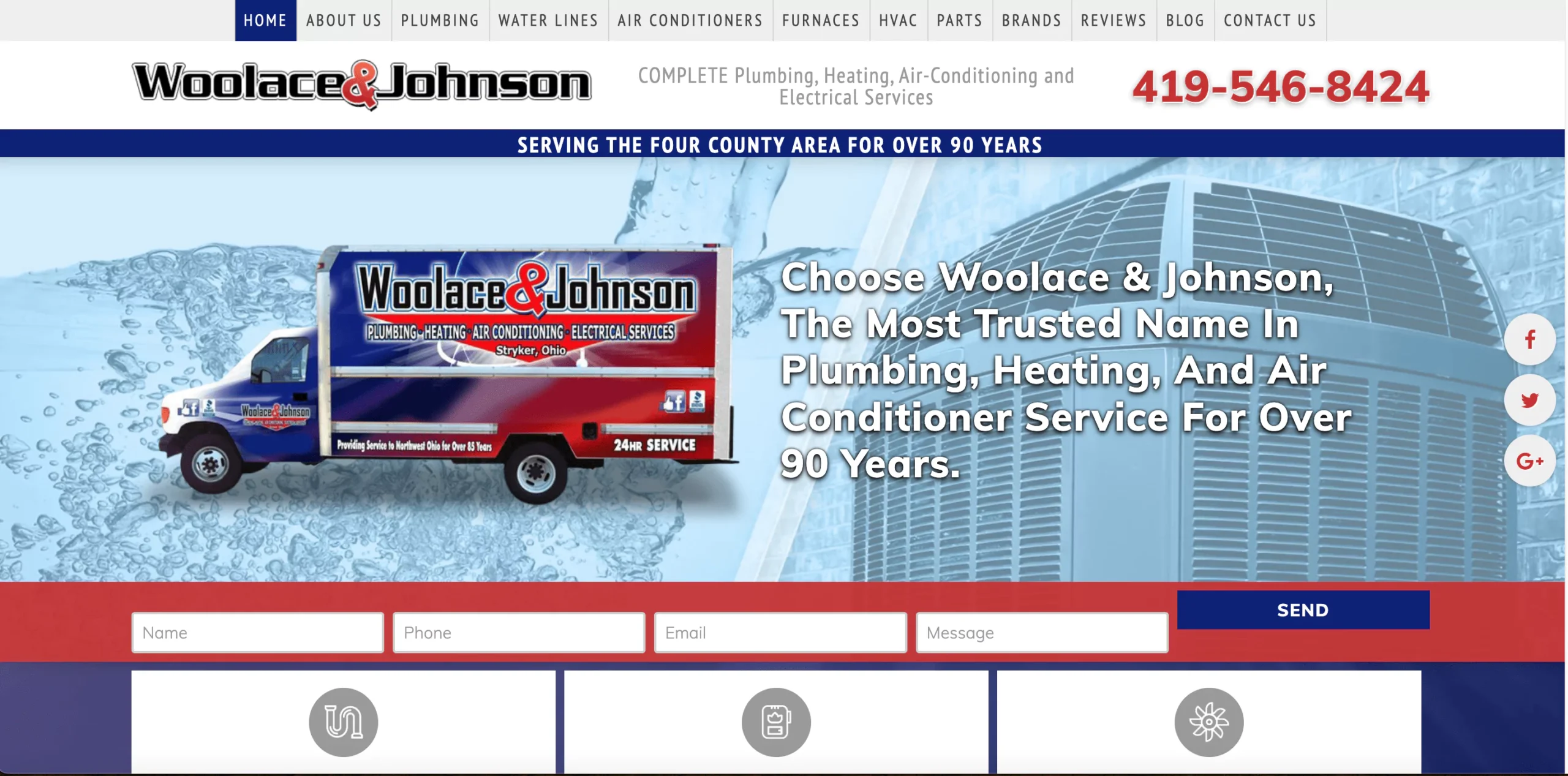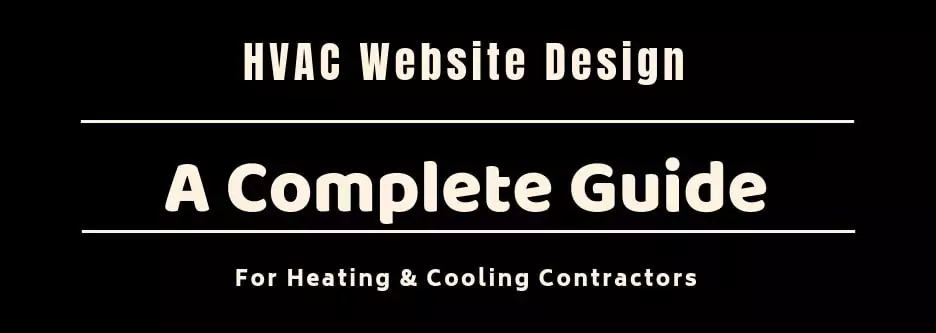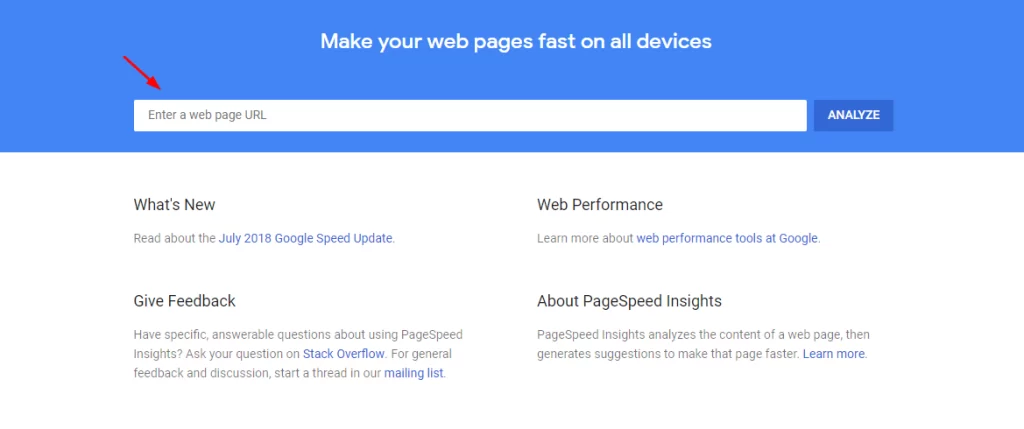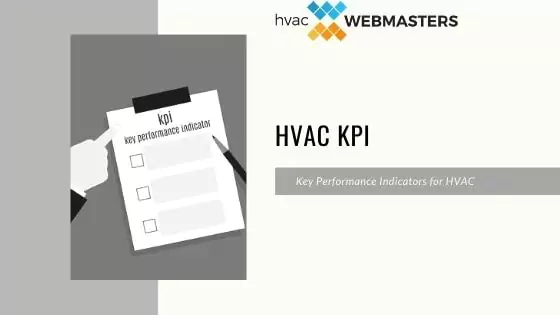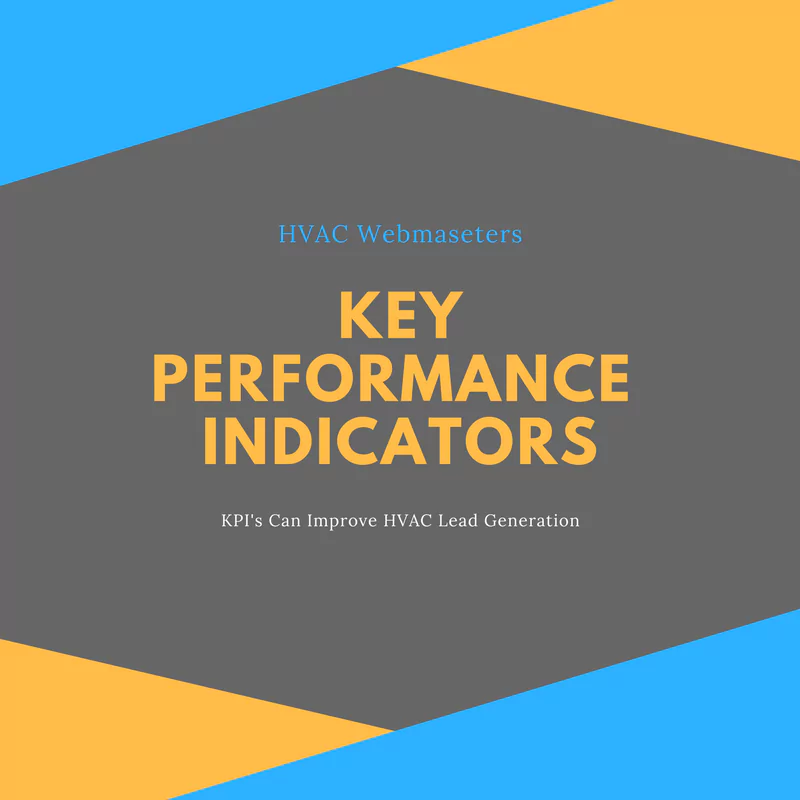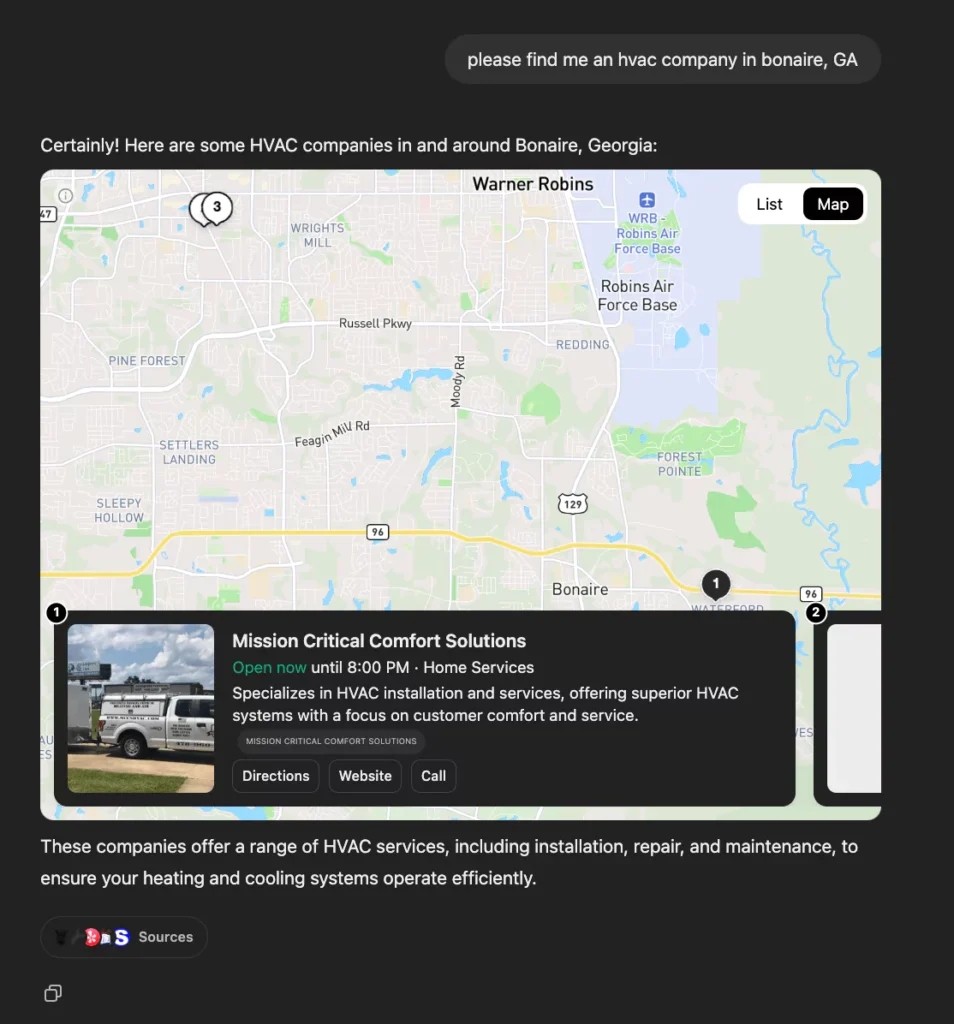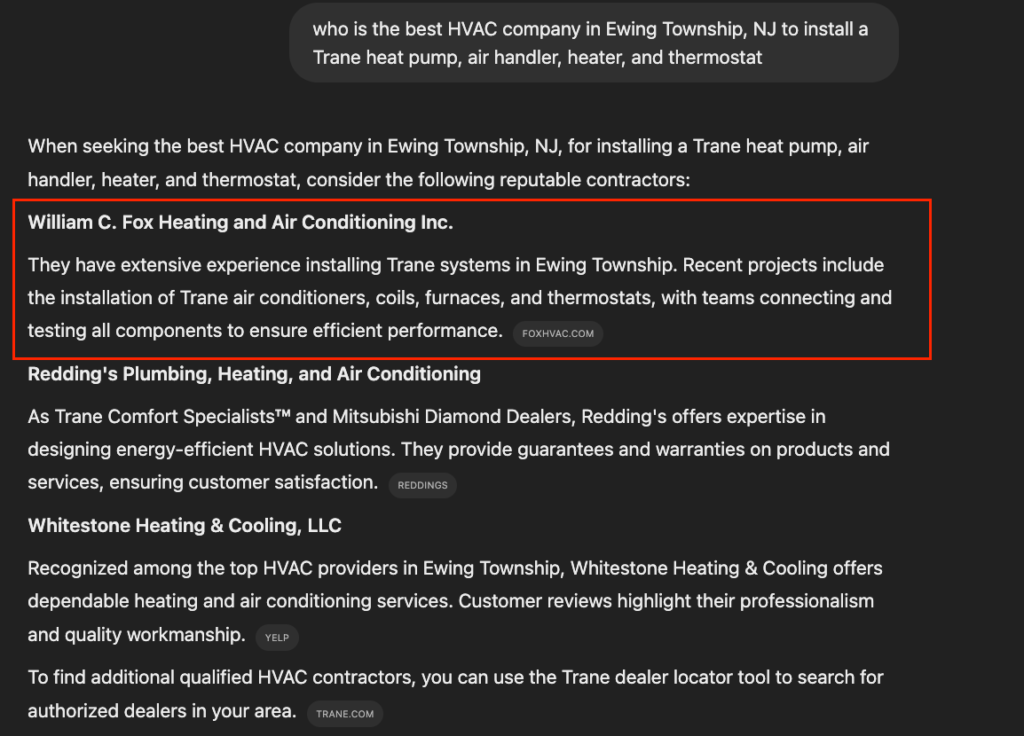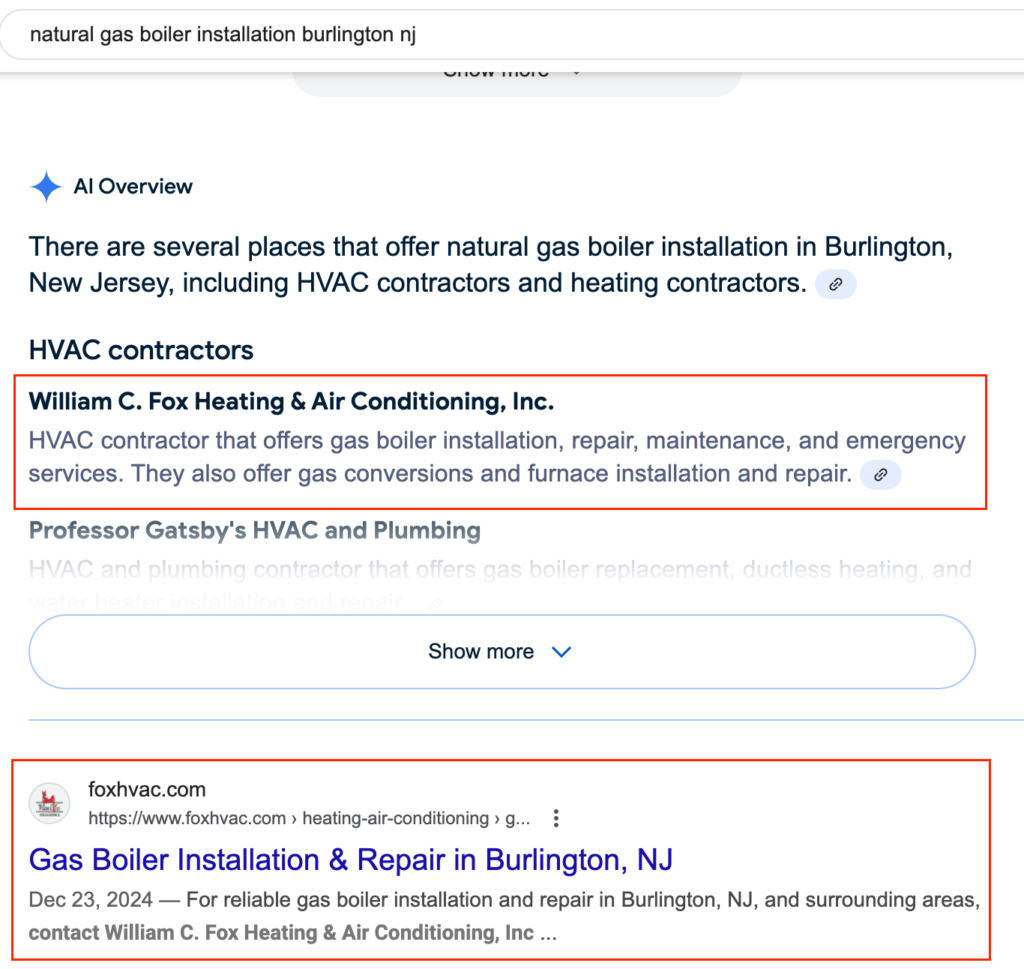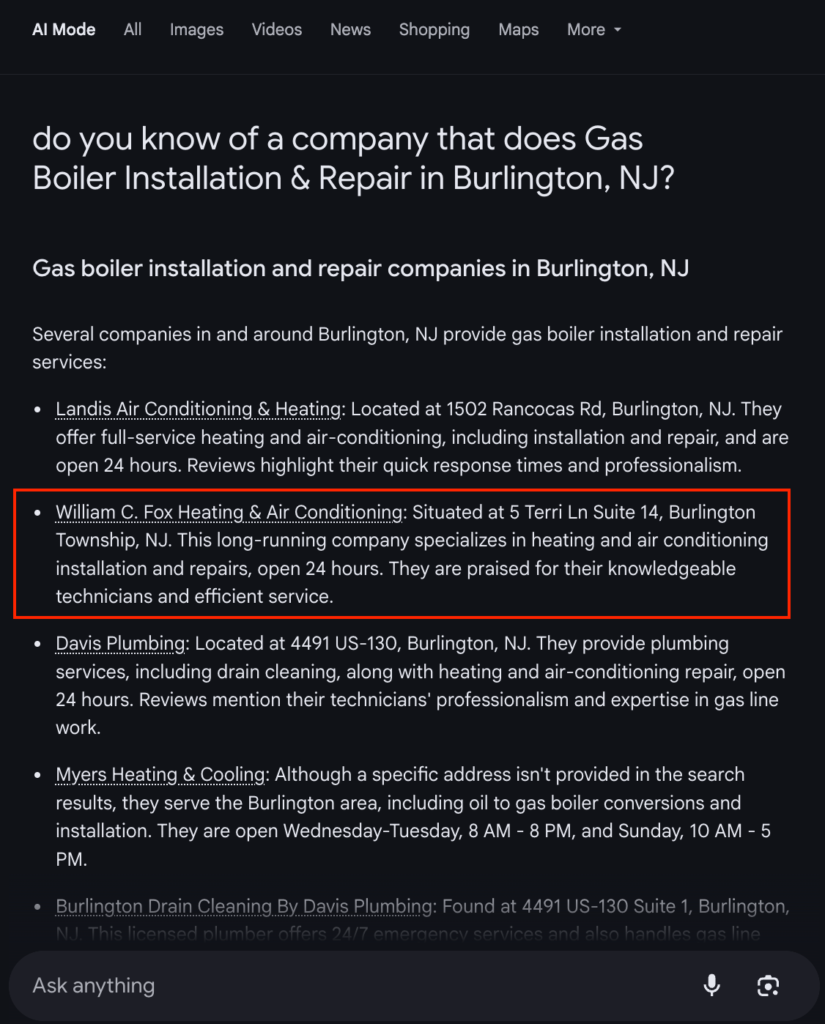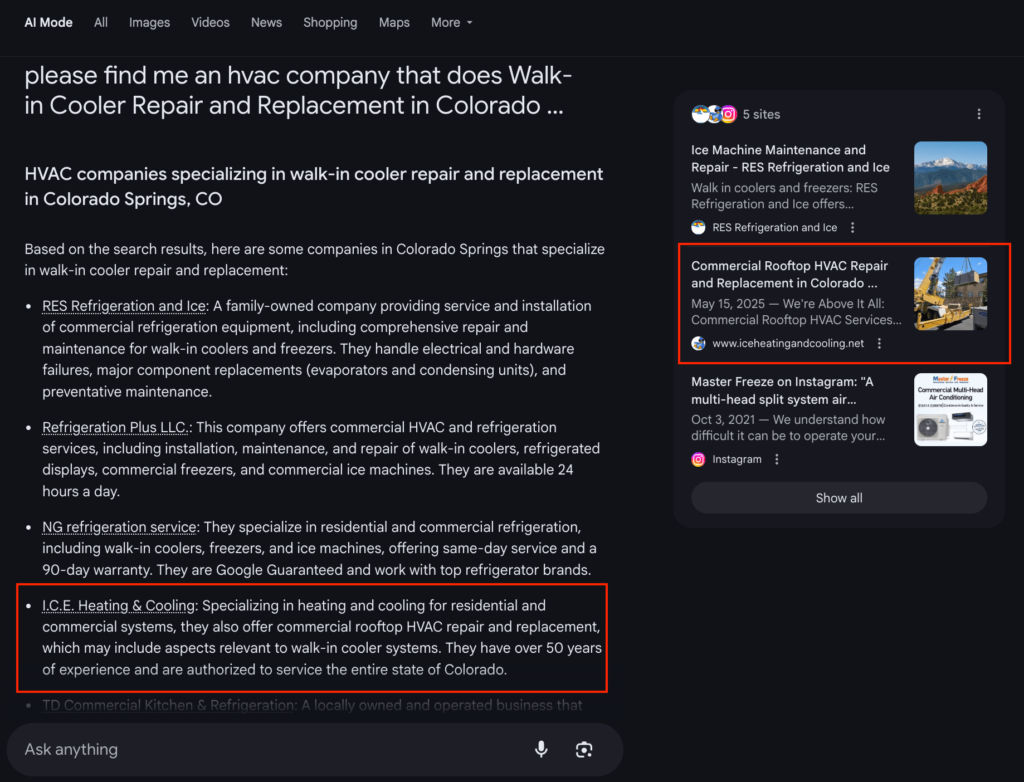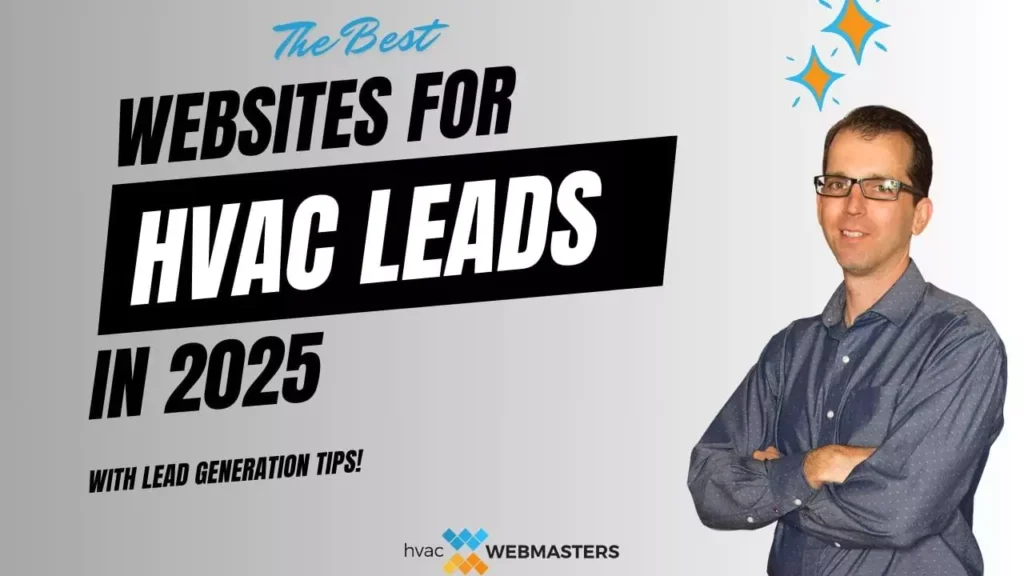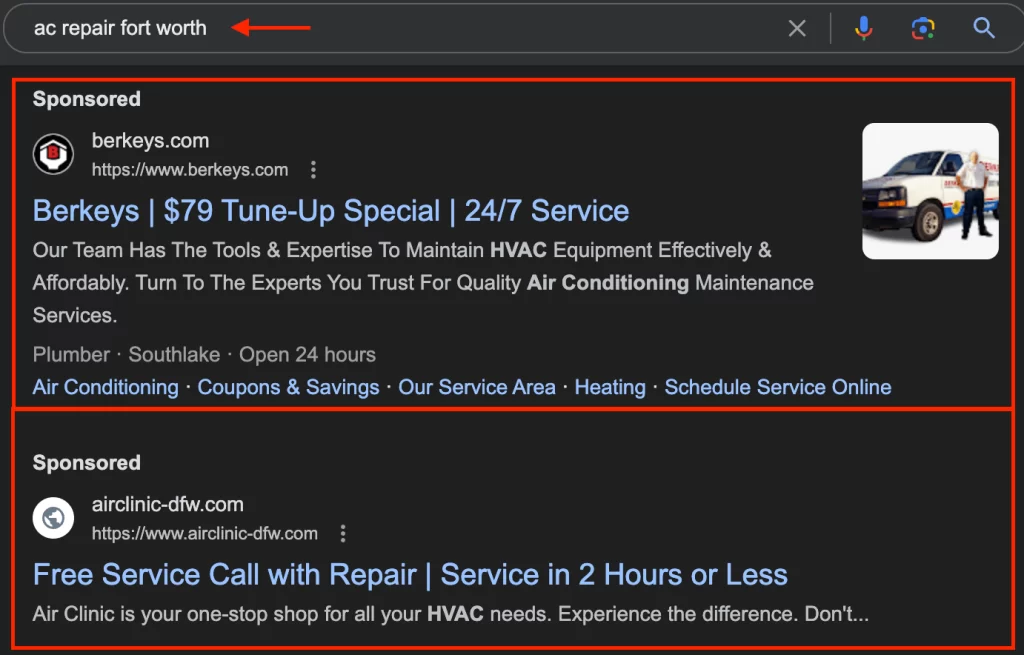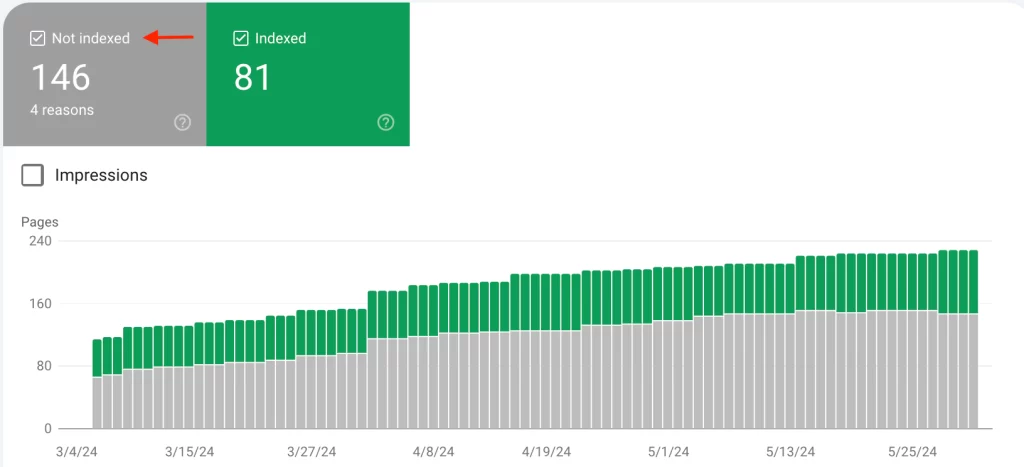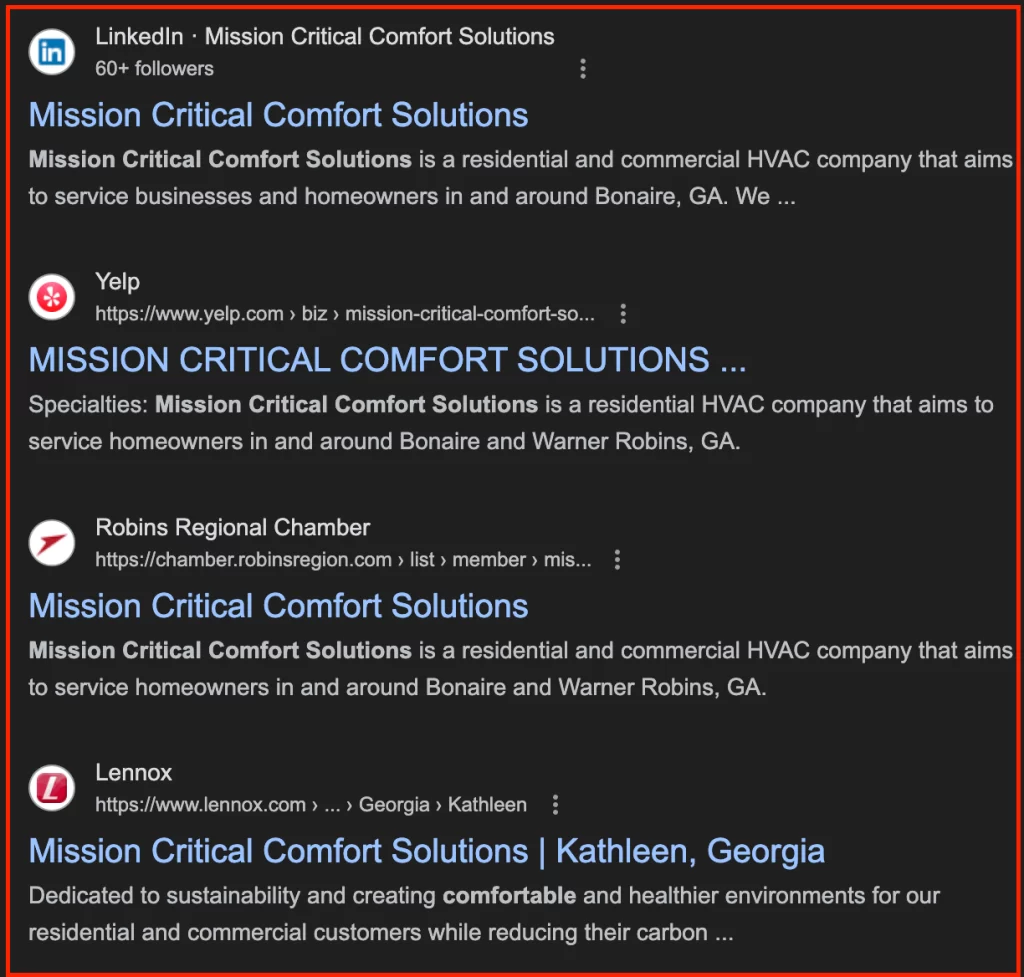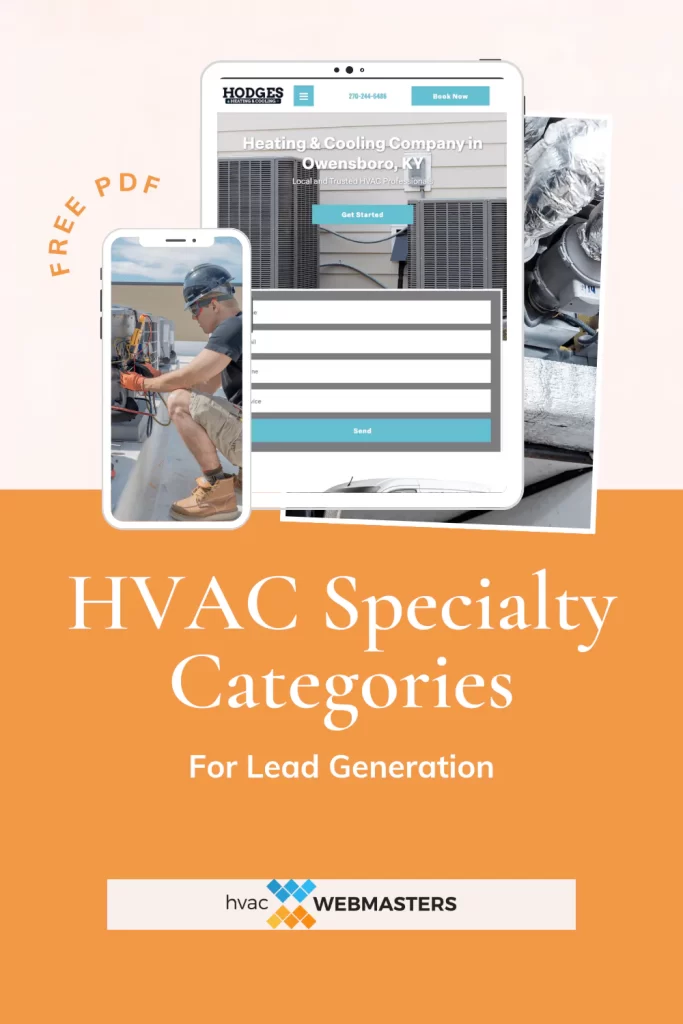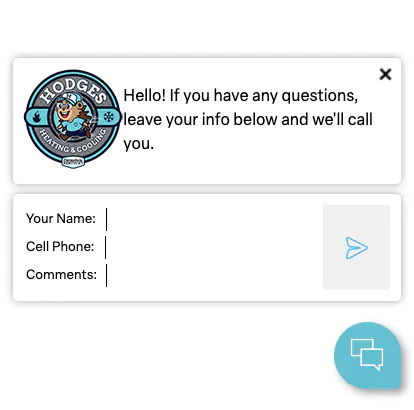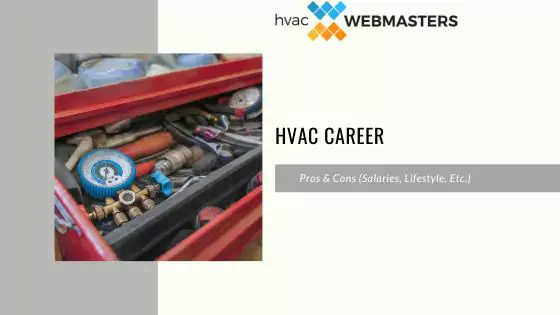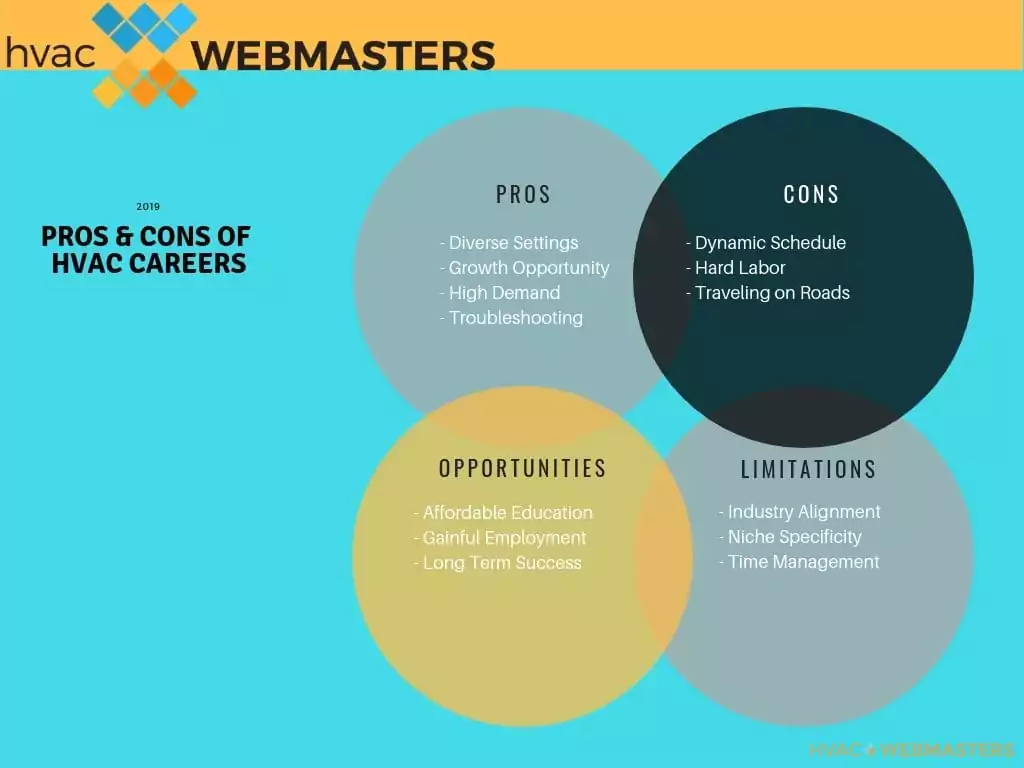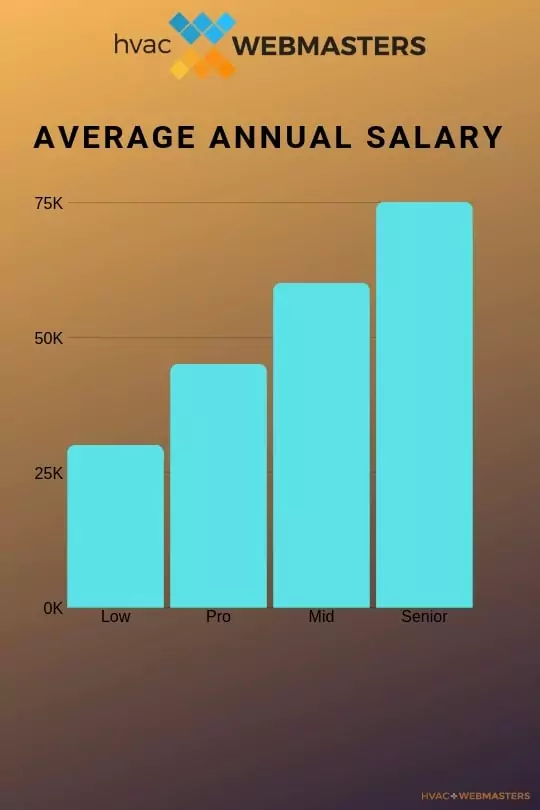Fixing an AC unit or furnace is your day job, but HVAC marketing is equally essential to your business success in 2026. Promoting your heating and cooling company is vital to customer acquisition.
Despite this clear need, HVAC advertising and digital marketing are often sources of dismay for local companies that deploy the wrong marketing strategies or hire the wrong agency.
As the founder of my digital marketing agency, HVAC Webmasters, I know firsthand the frustrations of HVACR contractors who’ve experienced grave disappointment with other advertising agencies.
Many service providers make marketing seem overly complex, which can confuse hard-working business owners looking to expand their promotional reach.
Proven HVAC Marketing Strategies
- Search Engine Optimization
- AI / LLM Optimization
- Pay Per Click Advertising
- Social Media Advertising
- Google Maps Optimization
- E-E-A-T Website Signals
- Jobsite Check-ins
- Business Citations
- Community Engagement & Sponsorships
- Email Marketing
- Content Marketing
- Customer Referral Programs
- Direct Mail
- Print Advertising
- TV Commercials
- Truck Wraps
- Podcasting
Having spent the past 15+ years working directly with thousands of HVAC companies on marketing campaigns, I’ve compiled 17 proven strategies for promoting a heating and cooling business in 2026.

1) Search Engine Optimization
One of the most popular digital marketing techniques is HVAC SEO, or search engine optimization.
The strategy consists of refining web content, URLs, links, and user experience to rank more effectively on Google, naturally driving more traffic and business to your company. SEO is a massive industry, and most local companies now invest in some form of SEO.
There are right and wrong ways to execute search optimization, and HVAC contractors should invest in the right services to help them achieve their goals.
Despite being the most cost-effective marketing strategy for exclusive lead generation, SEO garners a lousy reputation in HVAC circles. The discrepancy between perception and reality stems from the scarcity of trustworthy HVAC marketing agencies in the industry.
Some marketers continue to deploy obsolete or black-hat SEO methods, such as mass-producing blog posts on their clients’ websites, whether intentionally malicious or due to inexperience.
Google’s Helpful Content Update aimed to demote websites that created content for search engines rather than for people, and that update now runs in real time.
HVAC websites were among the worst offenders in this area, resulting in hundreds of thousands of them losing organic traffic.
Modern SEO requires branded digital signaling, E-E-A-T, and schema markup, which few agencies can or are willing to implement for their clients.
The ones that achieve it dominate SERPs and generate the most inexpensive and highest-quality leads in the marketplace.

2) AI / LLM Optimization
Optimizing for AI and Large Language Models will be crucial to HVAC marketing success in 2026.
Google has been showcasing these AI-generated overviews in some capacity since May 2024, and they are becoming increasingly ingrained in the searcher’s experience.
When your heating and cooling company appears in AI-generated answers, users see it as a Google recommendation, which can lead to immediate sales or gradual brand awareness.
Either way, your goal is to appear within these overviews as often as possible using SEO for AI platforms.
Google Gemini is trained by internet data, which means that your company appearing in list articles like “Best HVAC companies in Denver, CO. can help the AI learn more about your company.
Standard SEO practices also help the LLM learn more about your business, leading to greater visibility in AI Overviews.
My HVAC clients are noticing an increase in their leads coming from ChatGPT. Homeowners may ask ChatGPT questions like “Who is the best HVAC company in Mesa, Arizona?”
When ChatGPT delivers my clients within their AI-generated responses, homeowners trust the platform and take the next step by contacting the provider.
These types of interactions will become increasingly common, not just with ChatGPT but also with Google’s new AI Mode.

3) Pay Per Click Advertising
Advertising is a form of marketing, and pay-per-click (PPC) ads are the most popular digital advertising method.
Most HVAC companies gravitate toward pay-per-click ads because they deliver quick results with minimal effort.
Google Ads is the top pay-per-click platform in the HVAC industry, producing the most consistent results.
Proper campaign management is essential to generating a profitable ROI with Google Ads, and avoiding wasteful spending is the most integral strategy.
While short-term lead generation is appealing, a long-term PPC investment can yield negative ROI without careful planning.
In most cases, PPC works best as part of a broader digital marketing strategy that includes SEO, reputation management, and remarketing or pixel tracking.
The challenge for local business owners is avoiding the sales tactics of PPC agencies that require long-term agreements.
Many HVAC contractors I’ve worked with spent years in bad contracts with advertising agencies that used deceitful billing tactics to hide their Google Ads fees.
Once they finally break free from the term agreement, they will be hesitant to reinvest in Google Ads.
The good news is that with proper management and a synergistic digital marketing campaign, PPC can still return a sizable profit for HVAC customer acquisition.

4) Social Media Advertising
Facebook, Instagram, YouTube, and TikTok have become increasingly important in the HVAC advertising ecosystem.
An increasing number of your target customers spend their time on these social media platforms, especially Instagram Reels and YouTube Shorts.
Advertising to these consumers directly on these social apps is a great way to expand brand awareness.
You should note that, because social media fosters positive scrolling rather than active searching, the conversion rate per click will be far lower than on Google.
That said, targeted advertising, as part of a broader digital marketing campaign, is not always focused on direct lead generation.
By building brand awareness on Facebook, Instagram, YouTube, and TikTok, you can attract your target customers through a funnel that ultimately results in new clients.
Consider offering a lead magnet through your social ads, asking for an opt-in in exchange for a valuable resource like a guide, checklist, or coupon that benefits your audience.
Once they opt in to your service funnel, you can consistently reach them through email or remarketing (more on that later).
Remember that some of your audience are not currently seeking air conditioner or furnace repair, but they will inevitably need it at some point.
If your company stays top of mind, it will likely be the one they contact when the need arises.
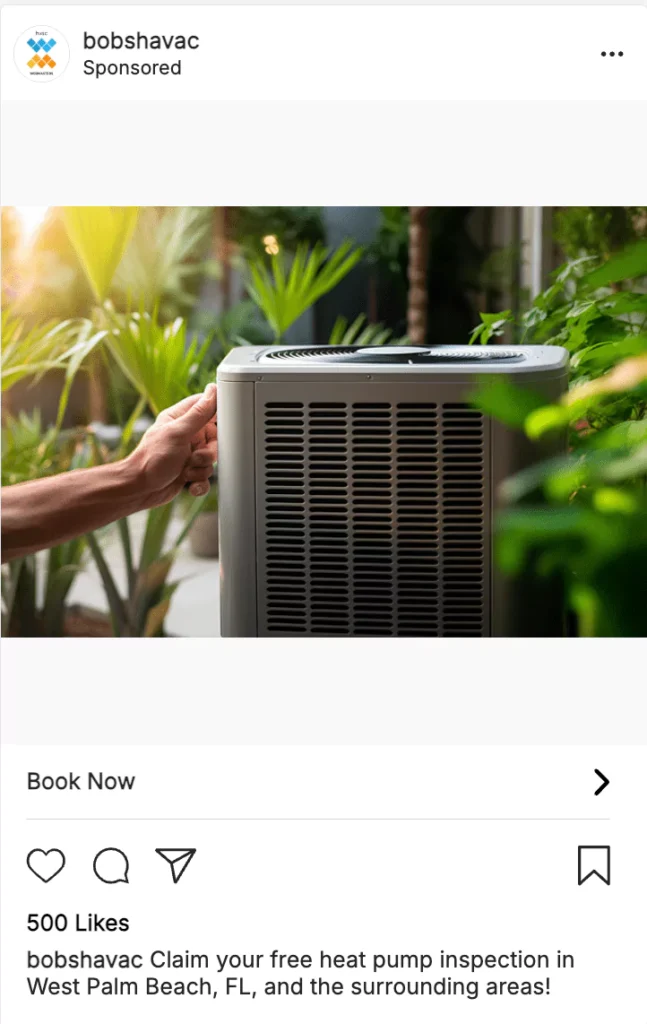
5) Google Maps Optimization
As a local HVAC company, you want your Google Business Profile (formerly known as Google My Business) to rank in Google Maps results, just as you want your website to rank in Google Search results.
When your website and business profile rank at the top of Google (in the Maps and Search sections), it creates a halo effect for searchers.
“Who is this HVAC company ranking simultaneously on Google Maps and Google Search?”
When you get searchers asking this question, your conversion rates will immediately increase. Ranking on Google Maps requires optimizing your Google Business Profile and website in tandem.
Google Maps uses information from your website, so ensure your business URL is inserted into the website field of your Google Business Profile.
From there, add your original photos to your profile and make sure your contact information is up to date.
Next, you should focus on requesting Google reviews and responding to existing ones to help build your listing’s prominence.
Optimizing Google Maps search results can increase your HVAC company’s visibility, build credibility, and increase conversion rates.
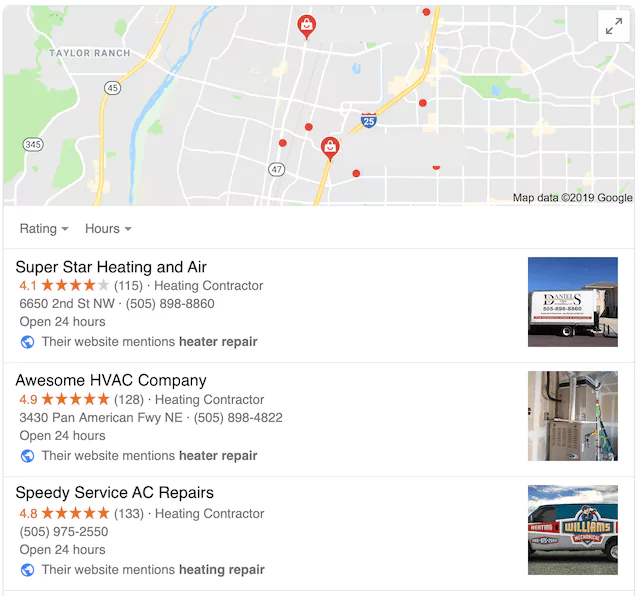
6) E-E-A-T Website Signals
E-E-A-T stands for expertise, experience, authoritativeness, and trustworthiness, and is an acronym coined by Google.
Because Google is your top marketing channel as a local contractor, meeting their publicly requested standards is key to maximizing success.
You can demonstrate these E-E-A-T qualities using various strategies, including adding your licenses and awards to your website’s homepage and embedding a review plugin for verified 3rd-party customer reviews.
Publishing content that contains expert information only you know is another way to showcase your expertise.
On your website, outline what makes your services unique and include images and proof of recent jobs. In addition, ensure your website is secure with HTTPS and site security so users feel comfortable with your business.
Implementing E-E-A-T on your business website will help set up your long-term brand online.

7) Jobsite Check-ins
Check-ins are a form of schema markup that allows HVAC contractors to showcase proof of recent jobs.
For example, performing an AC coil repair in a nearby town of 5,000 people would generally go unnoticed by your website visitors. However, with check-ins, you can show each job, including its service type and location.
As you might imagine, seeing proof of your job helps customers build trust in your services. The same applies to search engines like Google, which value unique content that demonstrates expertise.
You can use software tools like DataPins or NearbyNow to generate check-ins for heating and cooling jobs across your service areas.
Regular check-ins ensure your website stays fresh with new content daily or weekly.
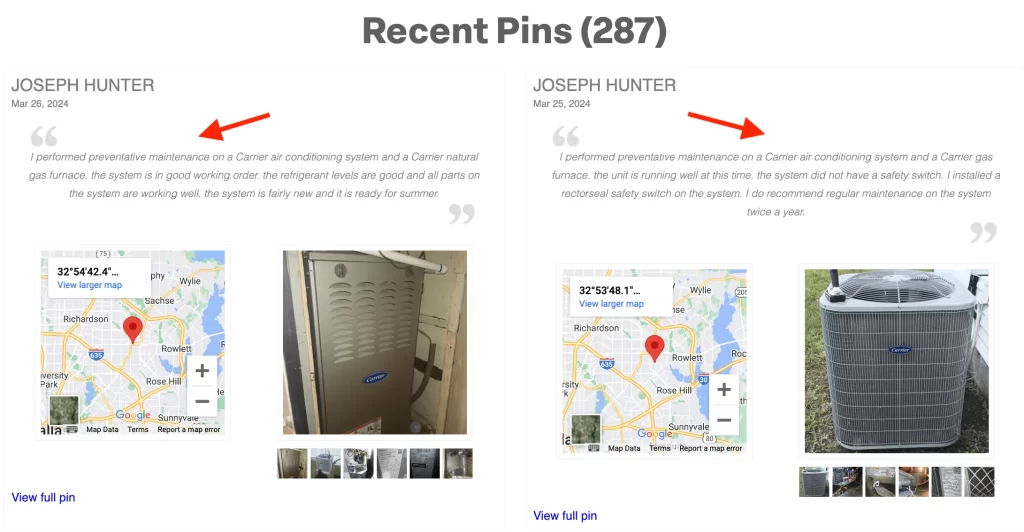
8) Business Citations
Citations, also known as NAP citations, showcase your HVAC business’s name, address, and phone number.
Your business must secure citations on major directories such as Yelp, Bing Places, and local chamber of commerce websites. Angi’ and HomeAdvisor are valuable citations, too.
You want your citations to have consistent NAP information to build digital credibility, especially with data aggregators like Data Axle and Neustar Localeze.
However, there is one caveat when it comes to citations: many are meaningless. Citations from directories not indexed on search engines like Google won’t help your business.
If you pay for these kinds of citations, you are wasting money. It’s not enough that the directories’ homepages are indexed; the interior pages with business information must also be indexed.
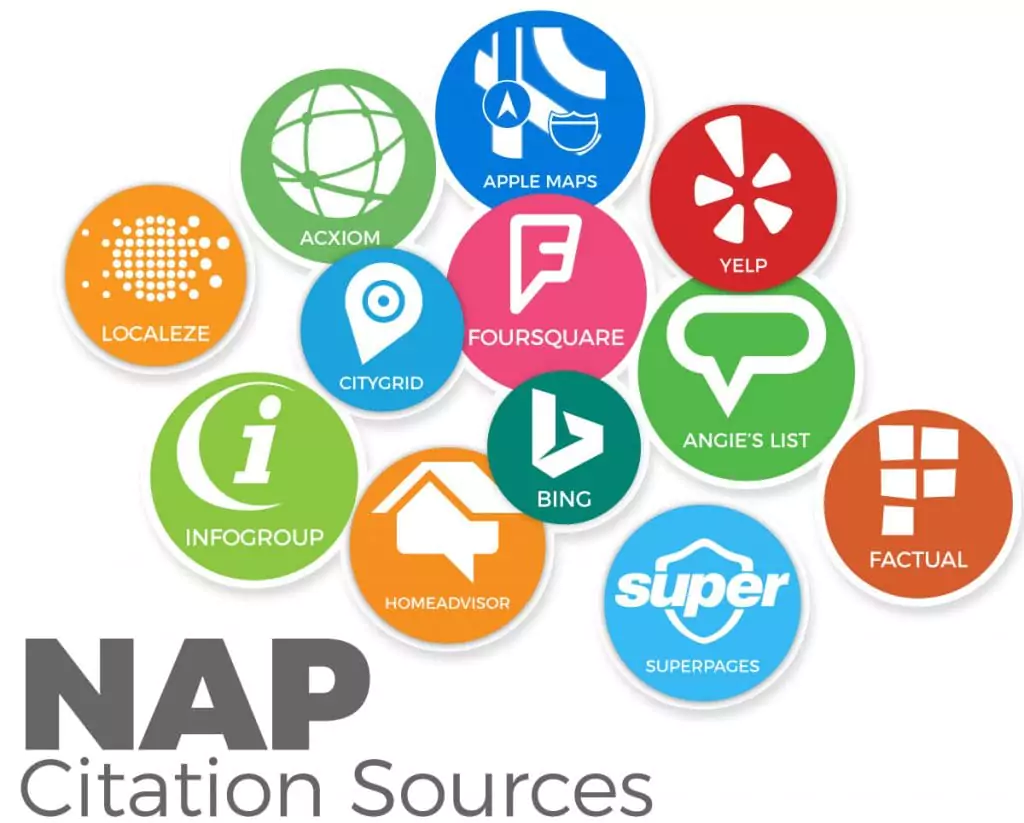
9) Community Engagement & Sponsorships
Community outreach is a legitimate way for HVACR companies to establish a local presence and build credibility with future clients.
Participation in local events and organizations helps your business build a positive association with your community.
As digital platforms like Google work to credit businesses that build authentic brands offline, these tasks become even more critical.
Offering free HVAC services to non-profits in your area is an excellent way to foster future relationships.
You might even consider hosting a speaking event or workshop where you outline the benefits of energy efficiency and AC maintenance for commercial producers.
Another form of community outreach comes from internships or apprenticeships with local colleges.
As these various engagements accumulate, your brand will grow and expand in more ways than you can imagine.
Sponsorships can help your HVAC business quickly increase brand awareness in your community. Little League teams and local charities are easily attainable sponsorships you can pursue immediately.
By sponsoring a local sports team, your logo can appear on their jerseys, promotional items, and even on signs within the field of play.
This visual association helps foster trust from your local consumer base. To expand your brand from an industry standpoint, consider sponsoring trade shows, HVAC-related events, and regional groups.
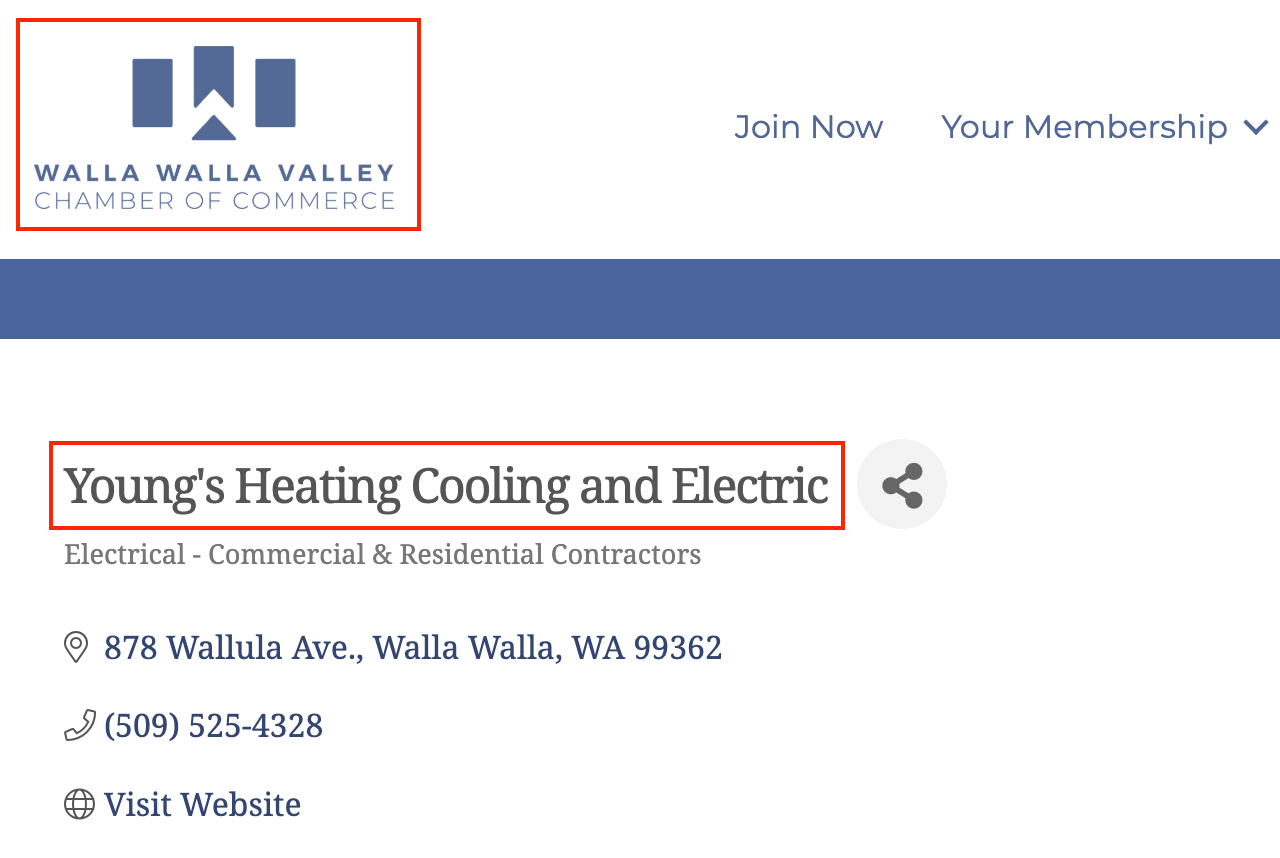
Bonus Tip: Public Relations (PR)
Public relations, or PR, is a legitimate way to market your heating and cooling business. Unlike link building, which aims to manipulate algorithms, digital PR naturally builds links while spreading brand awareness.
PR involves working with journalists to publicize your company’s achievements, innovations, and community endeavors.
Depending on your market, you may be able to earn a local TV spot on the news station. Authentic links from credible institutions, such as local news websites, are invaluable for digital marketing.
Furthermore, promoting your company through more traditional advertising channels (newspapers, magazines, etc.) allows you to cover all bases in brand awareness.
10) Email Marketing
Email marketing has become a critical promotional tool for HVAC businesses to nurture leads and increase customer acquisition.
Email subscriber lists allow companies to keep their audience informed about new services, discounts, and seasonal HVAC recommendations.
Consistent, informative newsletters keep your brand in front of your target customers.
In email marketing, segmentation is increasingly essential. The more customized your email lists are to specific audiences, the more likely they are to open and engage with your email sequences.
For example, people who previously scheduled furnace maintenance can be alerted that they need a check-up at a specific target date during winter.
Email marketing also helps increase customer acquisition by nurturing leads who have not become customers.
A large portion of your audience is not ready to buy immediately, but offering a lead magnet in exchange for an email opt-in lets you continue nurturing the lead through the sales cycle.
Using email marketing software such as ActiveCampaign or AWeber, HVAC companies can track metrics like open rates, click-through rates, and unsubscribe rates in the dashboard. From there, companies can adjust their campaigns to increase success.
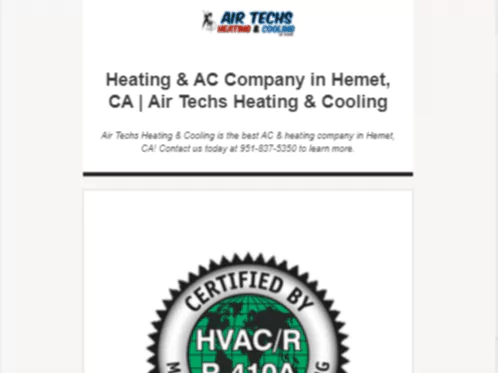
11) Content Marketing
Content marketing is a great promotional strategy when it adheres to Google’s guidelines and proves authentic value to visitors.
However, part of the reason Google implemented the Helpful Content Update was to prevent websites from publishing hundreds of thin blog posts that foster a negative user experience.
Unfortunately, most HVAC companies have been taught that mass-producing blog posts gives Google “fresh content,” which is an obsolete and inaccurate way of thinking about content.
Since heating and cooling websites are among the worst offenders of mass-producing low-quality content, they have lost significant traffic over the past several years.
Google’s Helpful Content Update demotes websites that engage in mass-produced content. Content marketing, the right way, involves strategically updating existing content. New content should only be created and published if a similar page does not exist.
Your content efforts should focus on maximizing existing pages rather than creating hundreds or thousands of pages that cover the same topic. You can check out my content marketing video below to better understand this process.

12) Customer Referral Programs
Customer referral programs help heating and cooling companies market their business through word of mouth.
When satisfied customers refer family or friends to your services, you gain great new clients already invested in your brand. The referral program incentivizes your existing client base when they refer new customers.
Their referrals can be tracked by providing each partner with a unique code to ensure they receive proper credit for bringing in new customers.
Examples of incentives include discounts, card or cash rewards, and complimentary services. You can promote your referral program to your existing client email subscriber list and increase awareness on your social media channels, such as Facebook.
Referrals are among the best leads your company will get from any marketing strategy, as conversion and repeat customer rates are exponentially higher than in other channels.
13) Direct Mail
Direct mail is often considered an old-school marketing strategy, but it remains effective in 2026.
The primary benefit of direct mail is hyper-regional targeting, which allows you to drill down your efforts to specific neighborhoods where your services are most coveted.
With this in mind, you should customize your mailers and marketing materials for the location you are covering.
Examples of direct mail include postcards, letters, and brochures, each with varying costs. To maximize your broader marketing campaign, include QR codes on your mailers so users can quickly access your website through their mobile devices.
You can follow up with these leads through email sequences and retargeting campaigns. Like digital marketing strategies, tracking success rates with direct mail is essential. Evaluating ROI is the key to maximizing a multi-channel marketing approach for HVACR businesses.

14) Print Advertising
Newspapers and magazines have become virtually obsolete over the past decade, making it seem like a waste to invest in advertising on these platforms.
However, those who continue to read newspapers trust them more than ever. Research indicates that 82% of people trust print ads.
Older demographics, such as homeowners and local residents, still rely on print for trusted service recommendations and other information.
While this group is a smaller subset of your clientele, it could represent a potential market inefficiency if competitors fail to target it.
As a result, if you can target local newspapers with HVACR advertisements, the ROI could prove surprisingly favorable.
Visual appeal plays a crucial role in executing a successful print ad. Make sure to invest in the highest quality images to foster visual engagement. Another factor with print advertising is consistency.
It is not enough for readers to see your ad one time and never again. You should run ads repeatedly in the same publications to build a rapport with subscribers over time.

15) TV Commercials
Let’s be clear: YouTube is now the top platform for video consumption worldwide. Digital ad spending officially overtook television ad spending over 7 years ago. However, television ad sales have increased by 5% since then.
The trend indicates that as the competition diminishes, the ROI increases. HVAC contractors looking to establish themselves in their local community may still benefit from a television spot.
When creating TV commercials, focus on a clear, engaging message highlighting a unique value promotion.
Another TV commercial strategy is to highlight a customer testimonial to build trust with viewers quickly. The audio and visual quality of your content is paramount, so don’t try to save money on professional video and audio production.

16) Truck Wraps
Wrapping your company work trucks creates a moving billboard for your HVAC brand. Because your technicians service various cities within your service area, their truck wraps will consistently reach your target audience.
An effective truck wrap design features your company logo, color scheme, phone number, and other branding elements.
I recommend including a branded QR code (tracked with a UTM tag for conversion measurement) and website URL to expand your exposure to a digital interface.
The text on your design should be legible from afar, as many onlookers will have to process the information while driving.
Another important factor when investing in vehicle wraps is durability, as these designs must withstand rain and other inclement weather conditions.
It’s important to remember that a broad digital marketing strategy synergizes, so multiple impressions of your brand across various channels combine to drive new customers.

17) Podcasting
HVAC podcasts are one of the industry’s most untapped marketing channels. They present a unique and engaging medium for connecting with future customers.
Podcasts enable HVAC business owners to share firsthand insights and position themselves as industry leaders.
Podcasts can be distributed through platforms like Spotify, Apple, and Amazon, making them easily accessible to a broad range of listeners.
Many of these listeners prefer to consume audio content while driving, working, or exercising.
Brainstorming your HVAC podcast starts with defining your target audience and choosing a niche topic within the HVACR industry.
Most top-performing podcasts regularly feature guests, allowing you to invite employees and others into your network for your show.
This is also an excellent opportunity to highlight strategic partnerships and create incentives for new partners to engage with your business.
To gain popularity in the podcasting forum, you must invest in high-quality recording equipment and podcasting editing software.
Furthermore, you must purchase podcast hosting and pay a monthly fee to host your episodes. You can outsource these assignments to 3rd-parties if you don’t have an in-house producer to help.
Promote your podcast on all your other marketing channels, including social media and your website. Encourage new listeners to subscribe to future episode updates and leave reviews and feedback.
While monetizing your podcast is certainly attainable after growing your subscriber base, the main goal here is to gain new customers and build brand authority.
Learn More: The Best HVAC Podcasts of 2026
Other HVAC Marketing Considerations
Purpose
My experience working with thousands of business owners over the past decade has proven that most companies invest in marketing to generate HVAC leads and acquire new customers.
While marketing has ancillary benefits, such as building consumer trust, its primary motivation is lead generation.
Cost
A standard marketing budget is 9.5% of your company’s revenue, which means the cost varies depending on how much you can afford to spend.
Additionally, marketing costs vary depending on the type of channel you invest in, from Facebook Ads to a local radio spot.
- SEO Services: $500-$10,000 per month
- Website Hosting: $20-$100 per month
- Facebook Ads: $150-$300 per month
- Google Ads: $1,000-$10,000 per month
- Billboards: $250-$4,000 per month
- Print Ads: $250-$5,000 per month
- Radio Ads: $800-$20,000 per month
How To Launch Your HVAC Marketing Campaign
Putting these marketing strategies into action requires officially launching your campaign. My list outlines the proven success of promotional efforts across both digital and traditional channels.
Since these techniques generate business growth, new customers, and more revenue, quickly putting them into action is the best way to yield results.
With over 15 years of first-hand experience as the owner of HVAC Webmasters, where I’ve worked directly with 1,000+ HVAC companies, I’ve developed a comprehensive marketing plan that leverages SEO, digital branding, and software to grow HVAC businesses across the United States.
Use my outlined strategies to start growing your HVAC marketing campaign today.


